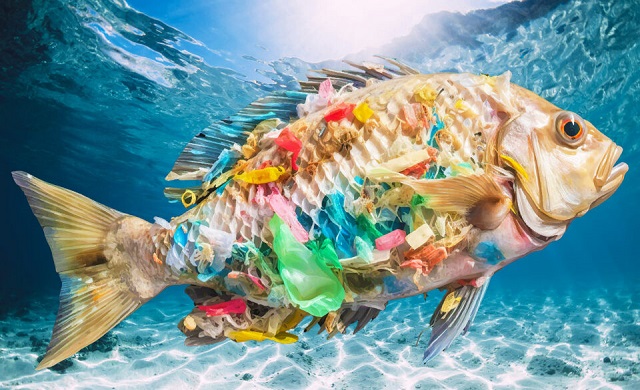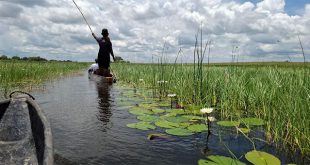
This all has serious implications for human health, as people catch and eat the fish
Kampala, Uganda | THE INDEPENDENT | The Nile is one of the world’s most famous rivers. It’s also Africa’s most important freshwater system. About 300 million people live in the 11 countries it flows through. Many rely on its waters for agriculture and fishing to make a living.
The Nile’s two main tributaries, the Blue Nile and the White Nile, come together in Sudan’s capital city, Khartoum. This industrial hub has grown rapidly over the past few decades.
The Nile is not immune to the same pollutants that affect rivers all over the world. Plastic debris is of particular concern. Over time plastics break down into smaller pieces known as microplastics. These are tiny plastic particles with a maximum size of five millimetres, all the way down to the nanoscale. Recent research found that “rivers are modelled to export up to 25,000 tons of plastics from their sub-basins to seas annually. Over 80% of this amount is microplastic”.
This has huge negative consequences for biodiversity and the climate. As microplastics degrade, scientists have found, they produce greenhouse gases. Airborne microplastics may influence the climate by scattering and absorbing solar and terrestrial radiation, leading to atmospheric warming or cooling depending on particle size, shape and composition. It also negatively affects animal and human health. Microplastics have been shown in laboratory studies to be toxic to animals and cells.
Much of the research about microplastics in African waters has focused on marine and coastal areas. To address this gap, researchers from School of Chemistry, University of the Witwatersrand, conducted a study to assess the presence of microplastics in the River Nile in Khartoum.
Prof. Dalia Saad and his student, Hadeel Alamin, tested for the presence of microplastics in Nile tilapia. This popular African freshwater fish species forms the basis of commercial fisheries in many African countries, including Sudan.
The results do not make for happy reading. In the 30 freshly caught fish they surveyed, they found 567 microplastic particles. This shows that the River Nile is contaminated with microplastics that can be consumed or absorbed in various ways by the tilapia and other aquatic organisms.
The fish used in their study were caught just after the meeting point of the two Niles, known in Arabic as Al-Mogran. All 30 specimens bought had microplastics in its digestive tract.
Shape, size and colour
Smaller microplastics are especially good carriers for other pollutants such as heavy metals, resulting in additional health risks. Their small size also makes it easier for them to move into organs like the liver. Studies have found microplastics in the tissues, muscles, livers, blubber and lungs of other aquatic as well as marine mammal species.
Fibres, the most dominant shape found in our specimens, stay in the intestine for longer than other microplastic shapes. This, too, can lead to health problems for the fish. Coloured microplastics contain dyes, many of which contain toxic chemicals.
This all has serious implications for human health, as people catch and eat the fish, which introduces those microplastics and associated chemicals into their bloodstreams.
Pollution sources
Where does all this plastic originate? For starters, 65% of plastic waste in Khartoum is disposed of in open dumps. From there, it contaminates water bodies and other parts of the environment.
The city’s wastewater treatment system is ineffective. The three wastewater treatment plants in Khartoum state, Karary, Wd-Daffiaa and Soba, are outdated and do not meet local and international standards. That means untreated effluent from domestic, industrial and agricultural activities is another probable source of microplastic pollution.
There are also countless recreational sites along the River Nile in Khartoum. The Nile Street is the most popular in the capital city, hosting water sports, restaurants, cafes, clubs, event venues and hotels, as well as the tea ladies (women who serve hot beverages from makeshift mobile cafes along the banks of the river). However, waste disposal and collection practices are sorely lacking, so plastic litter from these leisure activities leaks into the river.
No easy fix
Tackling microplastic pollution is not easy. It will require technological advances, as well as the collective efforts of consumers, producers, governments and the scientific community.
Consumers need to change their behaviour around plastic products, especially single-use plastics. For example, opt for fabric shopping bags instead of plastic bags; use glass and metal containers. Recycling is also important.
Governments must enforce waste management regulations and improve waste management practices, as well as helping to improve public awareness. Strategies and policies must explicitly feature microplastics.
Scientists can not only fill the knowledge gaps around microplastics. Communicating scientific findings is crucial; so too is developing innovations to protect against microplastics and their harmful effects.
******
Dalia Saad is a Researcher, School of Chemistry, University of the Witwatersrand, University of the Witwatersrand
Source: The Conversation
 The Independent Uganda: You get the Truth we Pay the Price
The Independent Uganda: You get the Truth we Pay the Price





